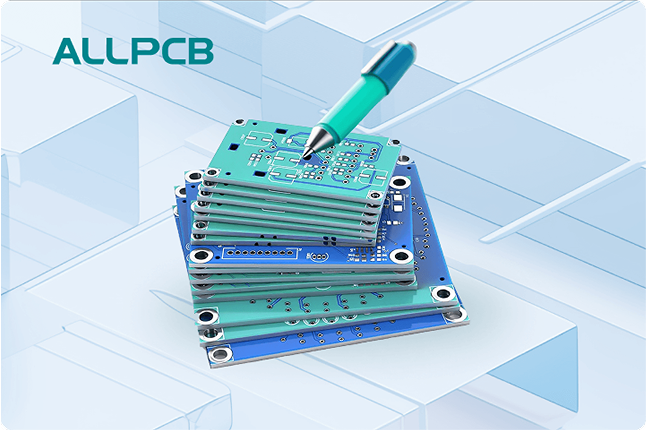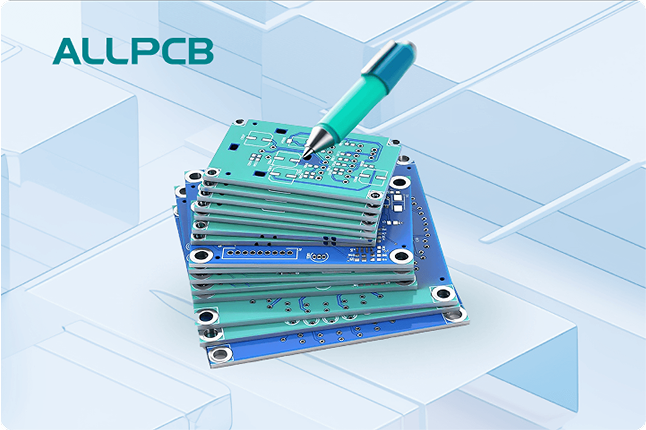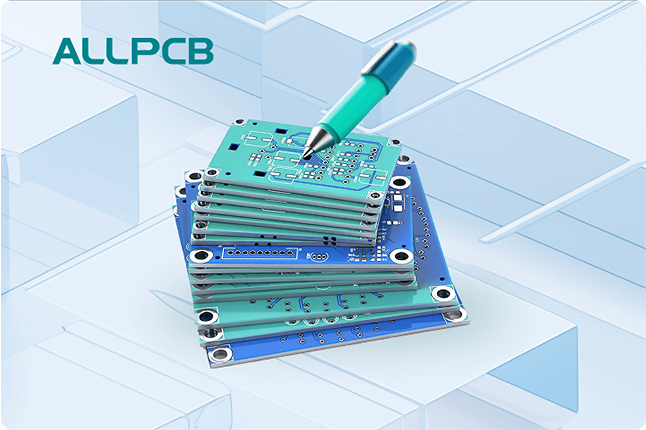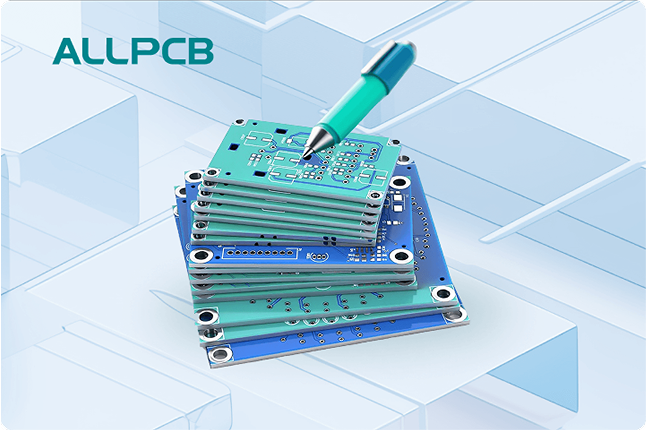If you're searching for "PCB Stackup Design Guidelines," you're likely looking for ways to optimize your printed circuit board (PCB) design for performance, reliability, and manufacturability. A well-designed PCB stackup, paired with the right lamination type, is the foundation of a high-performing board. In this comprehensive guide, we'll dive deep into the essentials of PCB stackup design, explore why lamination type is critical, and provide actionable tips to help you create boards that meet your project needs.
What Is PCB Stackup Design and Why Does It Matter?
PCB stackup refers to the arrangement of conductive copper layers and insulating dielectric materials in a multi-layer printed circuit board. Think of it as the blueprint that dictates how signals, power, and ground are distributed across the board. A proper stackup design ensures signal integrity, minimizes electromagnetic interference (EMI), and supports efficient power delivery.
Why does this matter? A poorly planned stackup can lead to issues like crosstalk, signal delays, or even complete board failure. For high-speed designs, such as those operating at frequencies above 1 GHz, stackup design becomes even more critical. The right configuration can mean the difference between a board that performs flawlessly and one that requires costly redesigns.
Key Guidelines for PCB Stackup Design
Designing an effective PCB stackup requires careful planning. Below are some essential guidelines to follow, tailored for engineers and designers working on various projects, from simple 2-layer boards to complex 8-layer or higher designs.
1. Determine the Number of Layers Needed
The first step in stackup design is deciding how many layers your PCB requires. This depends on the complexity of your circuit, the number of components, and the routing density. For instance:
- 2-Layer Boards: Suitable for simple designs with low-speed signals (e.g., basic consumer electronics).
- 4-Layer Boards: Ideal for moderate complexity with dedicated ground and power planes to reduce EMI.
- 6-8 Layers or More: Necessary for high-speed designs, such as those in telecommunications or data centers, where signal integrity and controlled impedance are critical.
As a rule of thumb, allocate enough layers to separate high-speed signals from power and ground planes to minimize interference. For a 6-layer board, a common stackup might include two signal layers on the top and bottom, with internal power and ground planes sandwiching additional signal layers.
2. Prioritize Symmetry in Layer Arrangement
Symmetry in your PCB stackup helps prevent warping during manufacturing. An unbalanced stackup, where one side has more copper or thicker dielectric material, can cause the board to bend under thermal stress. For example, in a 4-layer board, a symmetrical stackup could be:
- Layer 1: Top Signal
- Layer 2: Ground Plane
- Layer 3: Power Plane
- Layer 4: Bottom Signal
This balanced arrangement ensures even distribution of mechanical stress. Always consult with your manufacturing partner to confirm that your stackup aligns with their capabilities.
3. Optimize for Signal Integrity
Signal integrity is a top concern, especially for high-speed designs. To maintain clean signals and avoid issues like crosstalk or reflection, follow these tips:
- Place high-speed signal layers adjacent to a ground plane. This provides a return path for signals and reduces noise. For instance, in a 6-layer board, position high-speed signals on layers 1 and 6, with ground planes on layers 2 and 5.
- Control impedance by maintaining consistent dielectric thickness. For a 50-ohm trace, the dielectric height between the signal layer and ground plane might need to be around 5-10 mils, depending on the material.
- Avoid routing high-speed signals across split planes, as this can disrupt the return path and introduce noise.
4. Manage Power Distribution
Effective power distribution is crucial for stable operation. Dedicate internal layers to power and ground planes to create a low-impedance path for current. In a 4-layer board, for example, layers 2 and 3 can serve as ground and power planes, respectively. This setup minimizes voltage drops and provides decoupling for components.
For boards with multiple voltage levels (e.g., 3.3V and 5V), consider splitting power planes on the same layer, but ensure proper isolation to avoid interference. Alternatively, use additional layers for each voltage in more complex designs.
5. Consider Manufacturing Constraints
Always design with manufacturing in mind. Different fabricators have varying capabilities regarding layer count, dielectric thickness, and material options. Standard board thicknesses range from 0.8 mm to 1.6 mm, with 1.6 mm being the most common for 4-layer boards. Thinner boards (e.g., 0.4 mm) may be used for compact designs but can increase manufacturing costs.
Check with your fabrication partner early in the design process to ensure your stackup is feasible. This step can save time and prevent costly revisions later.
Why Lamination Type Matters in PCB Stackup Design
While layer arrangement gets much of the attention, the lamination type used in your PCB stackup is just as important. Lamination refers to the process of bonding layers of copper and dielectric material together under heat and pressure. The type of lamination and materials chosen directly impact the board's performance, durability, and cost.
Understanding Lamination Types
There are two primary lamination approaches in PCB manufacturing:
- Sequential Lamination: Used for boards with buried or blind vias, where layers are laminated in stages. This method is common for high-density interconnect (HDI) designs, allowing for finer traces and smaller vias. However, it increases manufacturing complexity and cost.
- Standard Lamination: All layers are laminated in a single process. This is simpler and more cost-effective, making it suitable for most standard multi-layer boards without complex via structures.
The choice of lamination type depends on your design requirements. For example, if your project involves a 10-layer board with microvias for a compact device, sequential lamination is likely necessary. For a basic 4-layer board, standard lamination will suffice.
Dielectric Material Selection and Lamination
The dielectric material between copper layers plays a huge role in how lamination affects performance. Common materials include:
- FR-4: The most widely used material due to its cost-effectiveness and decent electrical properties. It has a dielectric constant (Dk) of around 4.2-4.5 at 1 MHz, suitable for most applications up to a few GHz.
- High-Tg FR-4: Offers better thermal stability for lead-free soldering processes, with a glass transition temperature (Tg) above 170°C.
- Low-Dk Materials: Used for high-speed designs to reduce signal delay. These materials have a Dk below 3.5 and are often paired with sequential lamination for precise control.
During lamination, the dielectric material must bond uniformly to avoid delamination or voids, which can cause electrical failures. The lamination process must also account for the material's thermal expansion properties to prevent warping.
Impact of Lamination on Signal Performance
Lamination type and material choice directly affect signal performance. For high-frequency applications, such as RF circuits operating at 5 GHz or higher, the dielectric material's loss tangent (Df) becomes critical. A high Df (e.g., above 0.02) can lead to signal attenuation, while a low Df (e.g., 0.002) minimizes loss. Sequential lamination often pairs with low-loss materials to achieve tighter tolerances in layer alignment, ensuring consistent impedance across the board.
Additionally, improper lamination can introduce inconsistencies in dielectric thickness, leading to impedance mismatches. For a 50-ohm transmission line, even a 1-mil variation in dielectric height can shift impedance by several ohms, potentially causing signal reflections.
Cost and Reliability Considerations
Lamination type also influences cost and reliability. Sequential lamination, while offering precision for complex designs, can increase production costs by 20-30% compared to standard lamination. On the other hand, standard lamination is more reliable for simpler designs since it involves fewer process steps, reducing the risk of defects.
For reliability, ensure that the lamination process matches the operating environment of your board. For example, boards exposed to high temperatures or humidity may require high-Tg materials and robust lamination to prevent layer separation over time.
Best Practices for Combining Stackup Design and Lamination
To achieve the best results, integrate stackup design and lamination considerations from the start. Here are some practical tips:
- Collaborate Early: Work with your manufacturing partner to align stackup design with their lamination capabilities. Share your layer arrangement and material preferences upfront.
- Simulate Performance: Use design software to simulate signal integrity and impedance based on your stackup and dielectric materials. Adjust layer thickness and spacing as needed before finalizing the design.
- Test Prototypes: Build and test a prototype to validate your stackup and lamination choices. Measure key parameters like impedance and signal delay to ensure they match your expectations.
- Document Specifications: Clearly specify dielectric thickness, material type, and lamination requirements in your design files to avoid miscommunication during production.
Common Mistakes to Avoid in PCB Stackup and Lamination
Even experienced designers can make mistakes that compromise board performance. Watch out for these pitfalls:
- Ignoring Material Properties: Choosing a dielectric material without considering its Dk or Df can lead to signal issues in high-speed designs.
- Unbalanced Stackups: Asymmetrical layer arrangements can cause warping, especially during lamination under heat and pressure.
- Overlooking Via Structures: Failing to account for via types (through-hole, blind, or buried) when selecting lamination type can result in manufacturing delays or defects.
- Skipping Manufacturer Feedback: Not consulting your fabricator early can lead to stackup designs that are difficult or costly to produce.
Conclusion: Building Better PCBs with Stackup and Lamination in Mind
Designing a PCB stackup is a critical step that sets the stage for your board's performance and reliability. By following the guidelines outlined above—such as determining the right number of layers, prioritizing symmetry, and optimizing for signal integrity—you can create a stackup that meets your project's needs. Equally important is selecting the appropriate lamination type and dielectric material, as these choices impact everything from signal performance to manufacturing cost.
Whether you're working on a simple 2-layer board or a complex high-speed design, remember that stackup and lamination go hand in hand. Take the time to plan carefully, collaborate with your manufacturing partner, and test your design to ensure success. With these PCB stackup design guidelines and an understanding of why lamination type matters, you're well-equipped to build boards that perform reliably in any application.
 ALLPCB
ALLPCB







